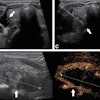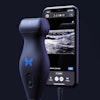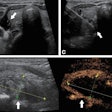Rural, older, and poorer children face barriers in obtaining an ultrasound exam for acute appendicitis, according to research published October 17 in the Journal of Surgical Research.
A team led by Jack Scaife from the University of Utah in Salt Lake City found that children with these sociodemographics are more likely to present to hospitals that don’t use ultrasound to diagnose acute appendicitis. It also found that they are less likely to undergo ultrasound at hospitals that have ultrasound resources.
“Hospital systems should prioritize developing ultrasound capacity and implement a standardized protocol to promote ultrasound as the primary diagnostic tool for pediatric appendicitis,” Scaife and colleagues wrote.
The American College of Radiology (ACR) recommends an ultrasound-first approach when examining appendicitis. However, previous studies have shown that health disparities persist when it comes to children receiving imaging services in the emergency department.
Scaife and co-authors wanted to study the variability of ultrasound-first approaches for assessing children presenting with acute appendicitis to U.S. emergency departments. This included describing trends among different pediatric subpopulations. The researchers used data from the 2019 Nationwide Emergency Department Sample for their retrospective study, which included patients younger than 18 years old who had a primary diagnosis of acute appendicitis.
The team included data from 49,703 children, of whom 24,102 (48%) received an ultrasound evaluation. The group found that pediatric patients aged 11-17 had higher odds of presenting at a hospital with no ultrasound use. This also went for children who were in the lowest median household income quartile and those in rural locations. However, Hispanic children had lower odds of presenting at these hospitals compared with non-Hispanic white children.
| Likelihood of children presenting at hospital with no ultrasound use for evaluating appendicitis | ||
|---|---|---|
| Variable |
Odds ratio |
p-value |
| Children ages 11-17 (compared with children aged 6 or younger) |
1.59 |
0.002 |
| Lowest median household income quartile (compared with highest) |
2.5 |
< 0.001 |
| Rural locations (compared with metropolitan) |
8.36 |
< 0.001 |
| Hispanic (compared with non-Hispanic white) |
0.63 |
0.01 |
The researchers also found that the odds of receiving an ultrasound exam at hospitals that are capable of doing such exams were significantly lower for children older than six years old, those who were in the lowest median household income quartiles, and those in rural locations (p < 0.05 for all).
The study authors suggested that their results point to the ACR appropriateness criteria for diagnosing pediatric appendicitis not being followed and that barriers may exist in providing equitable care.
“Given the overwhelming benefits of following ACR criteria and utilizing ultrasound to diagnose appendicitis, all hospital systems should move to develop the capabilities to use ultrasound as the primary diagnostic tool for pediatric appendicitis,” they wrote.
One way to do this is by making adherence to the criteria a quality metric, with nonadherence resulting in financial penalties to hospitals, the authors suggested. They also wrote that efforts should be made to train more emergency department providers in this area so any penalty would not target poorly resourced hospitals.
The full study can be found here.



















